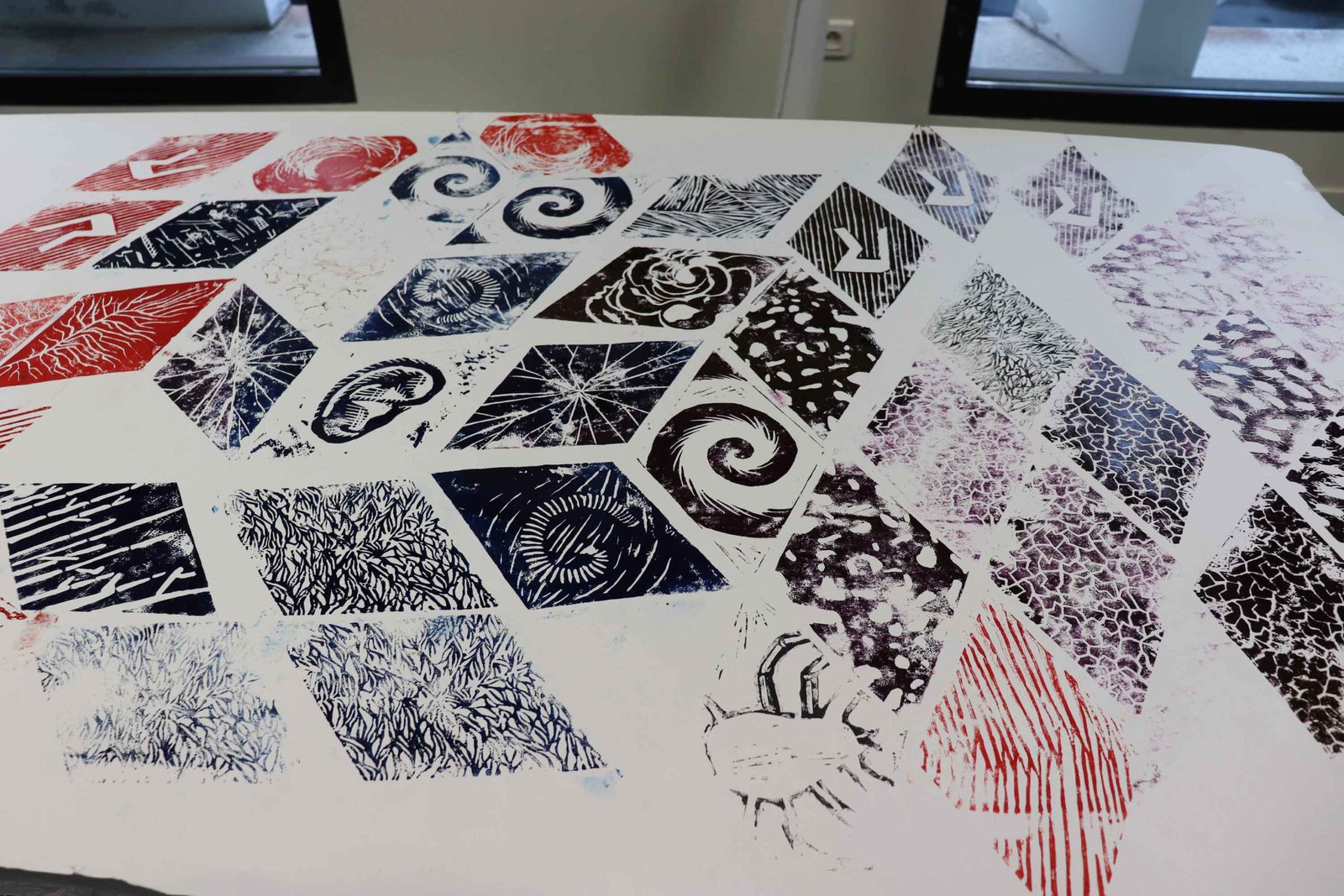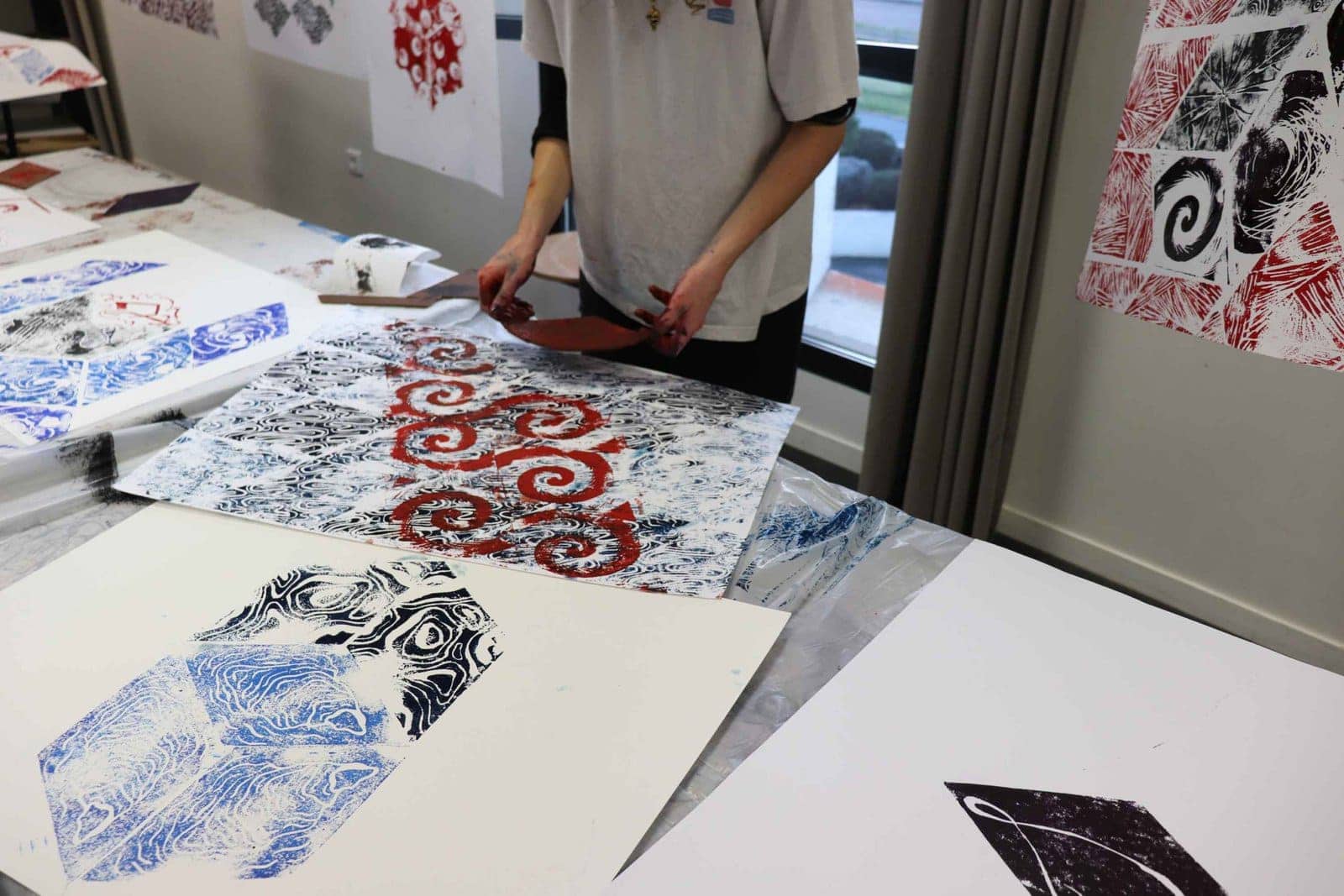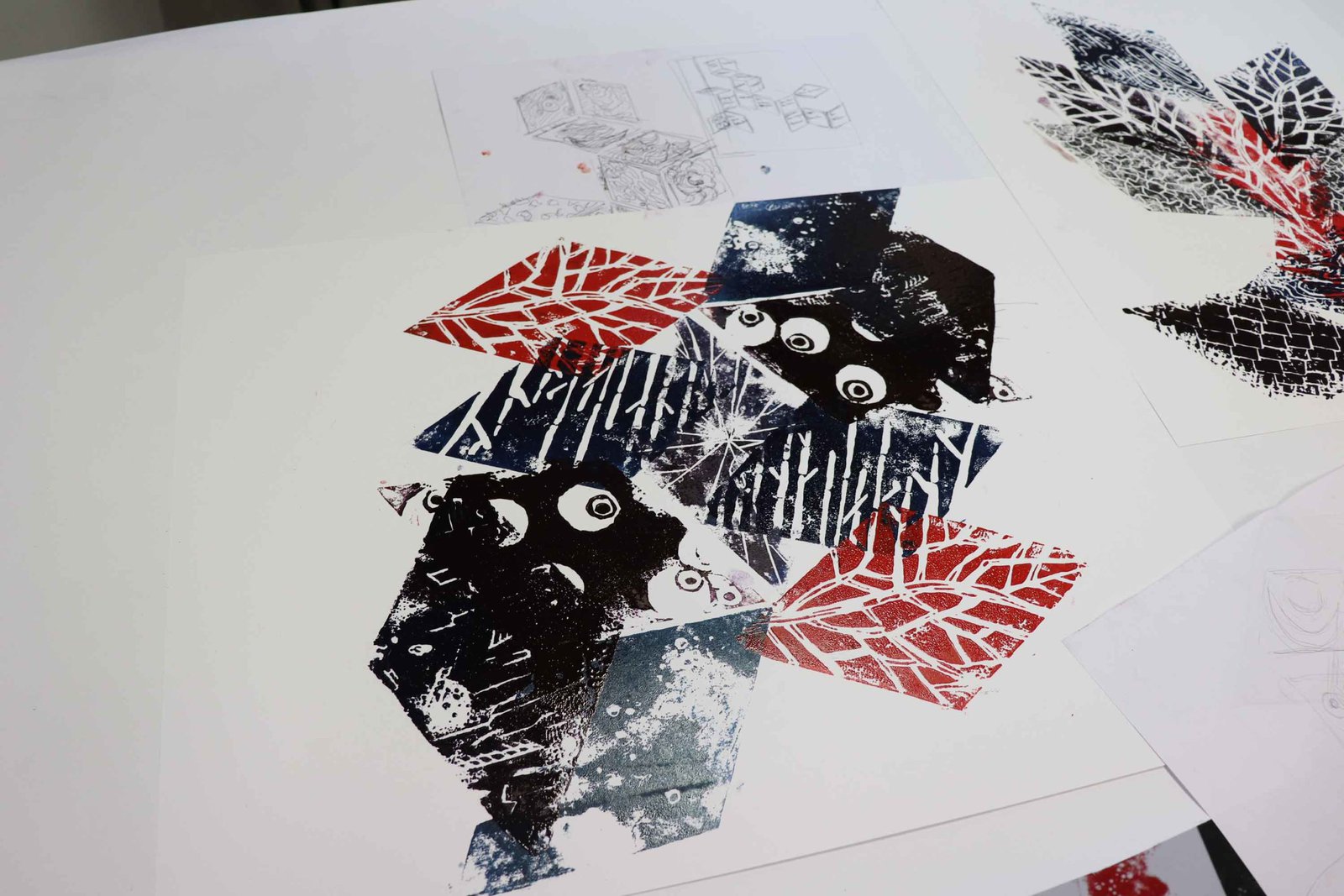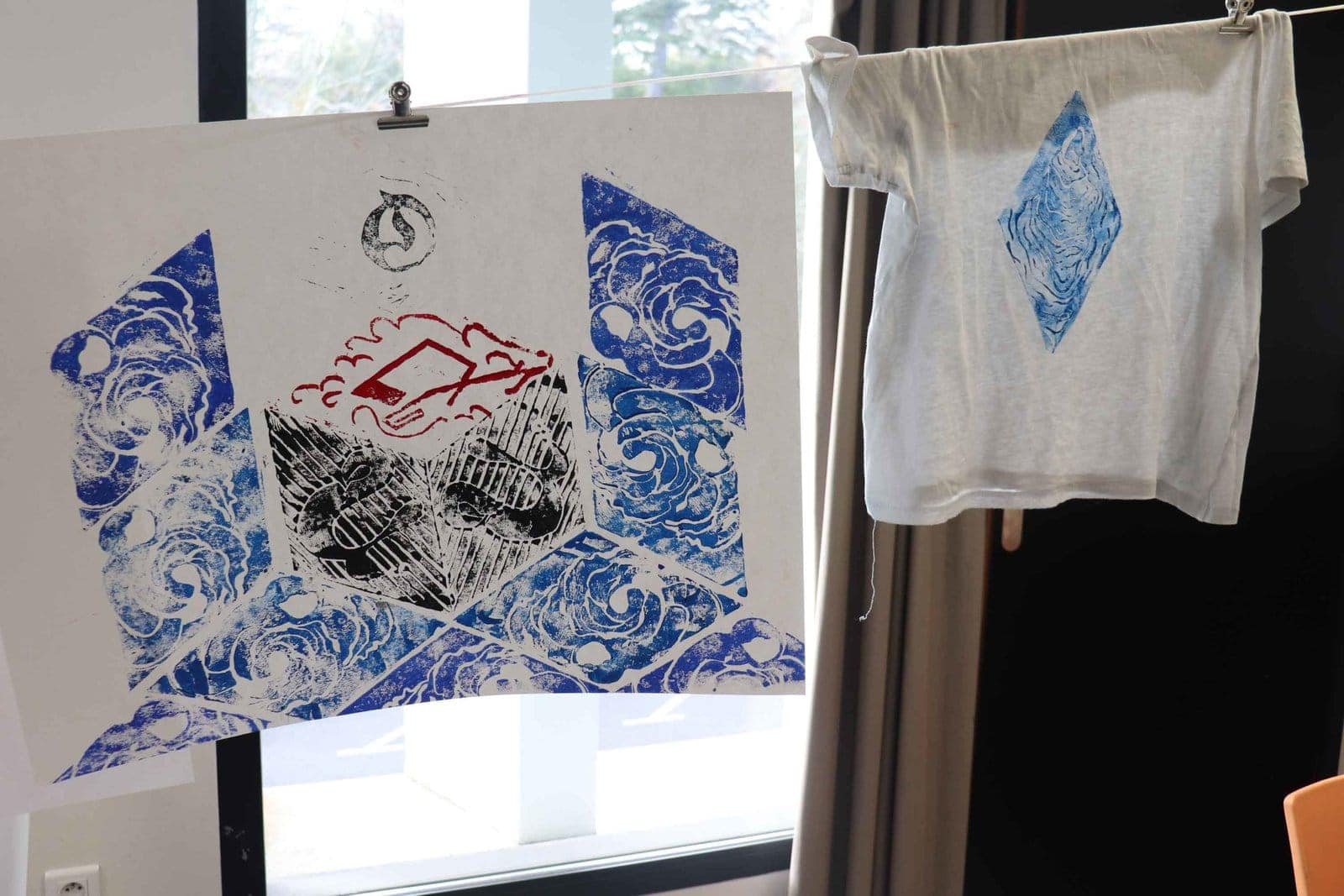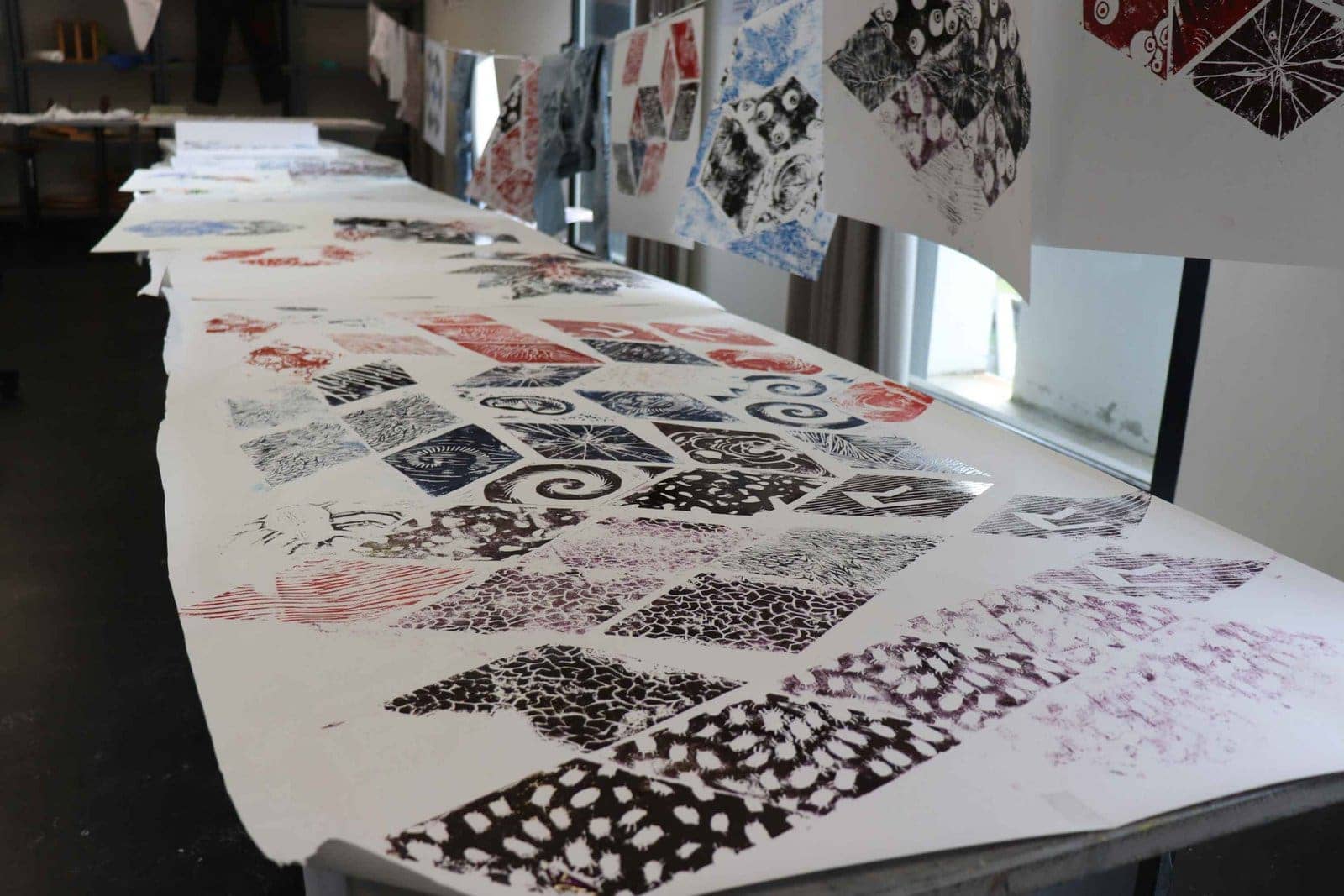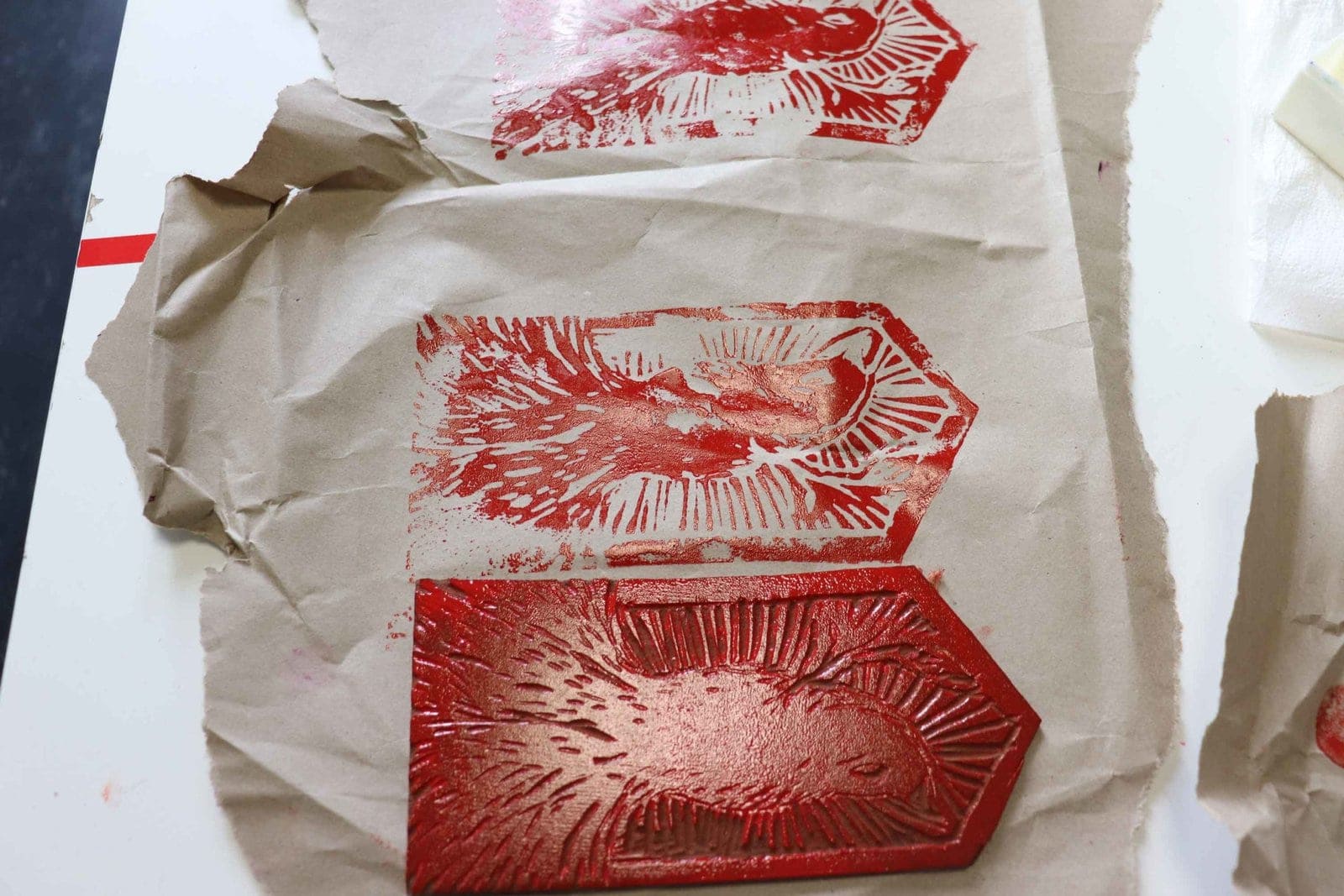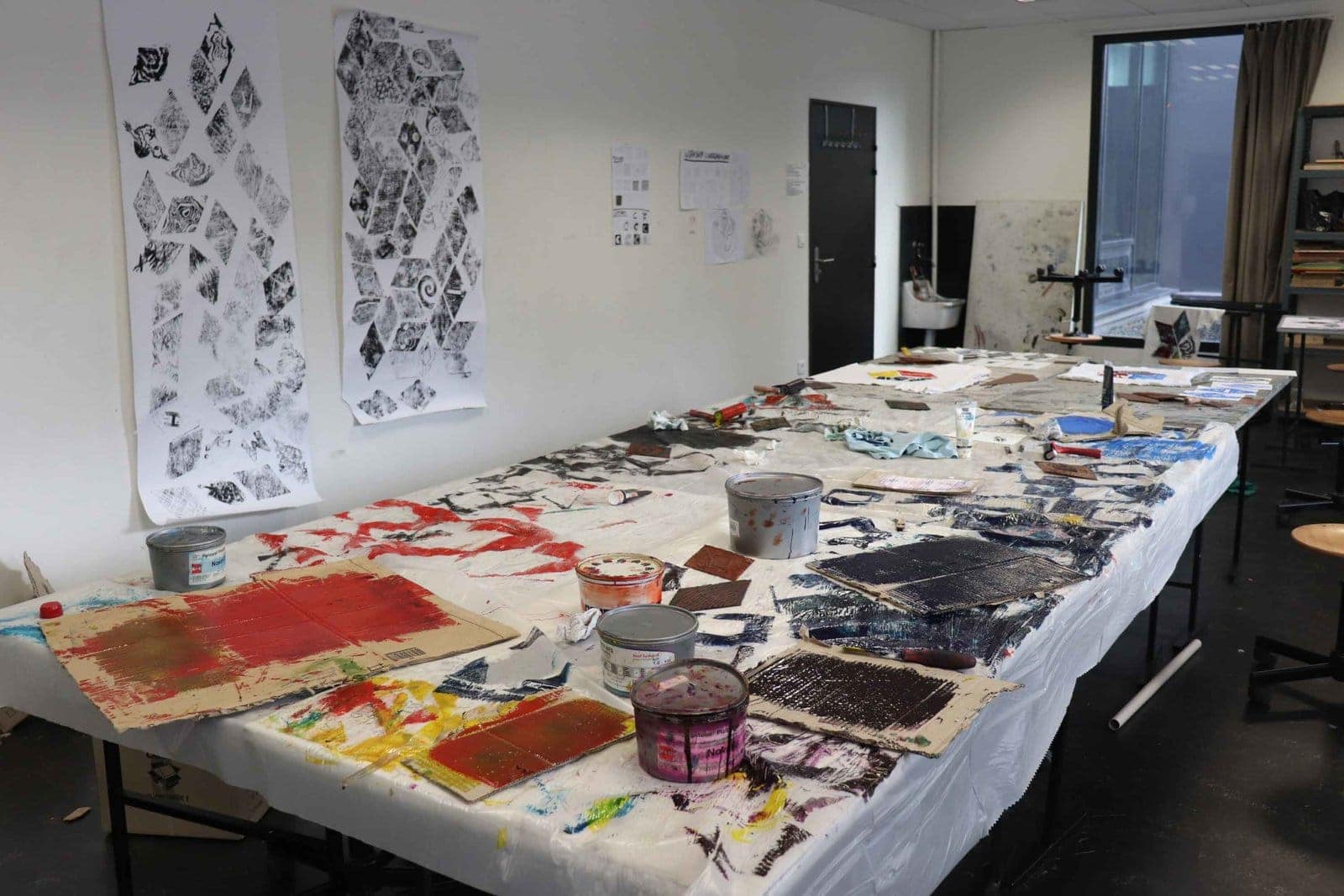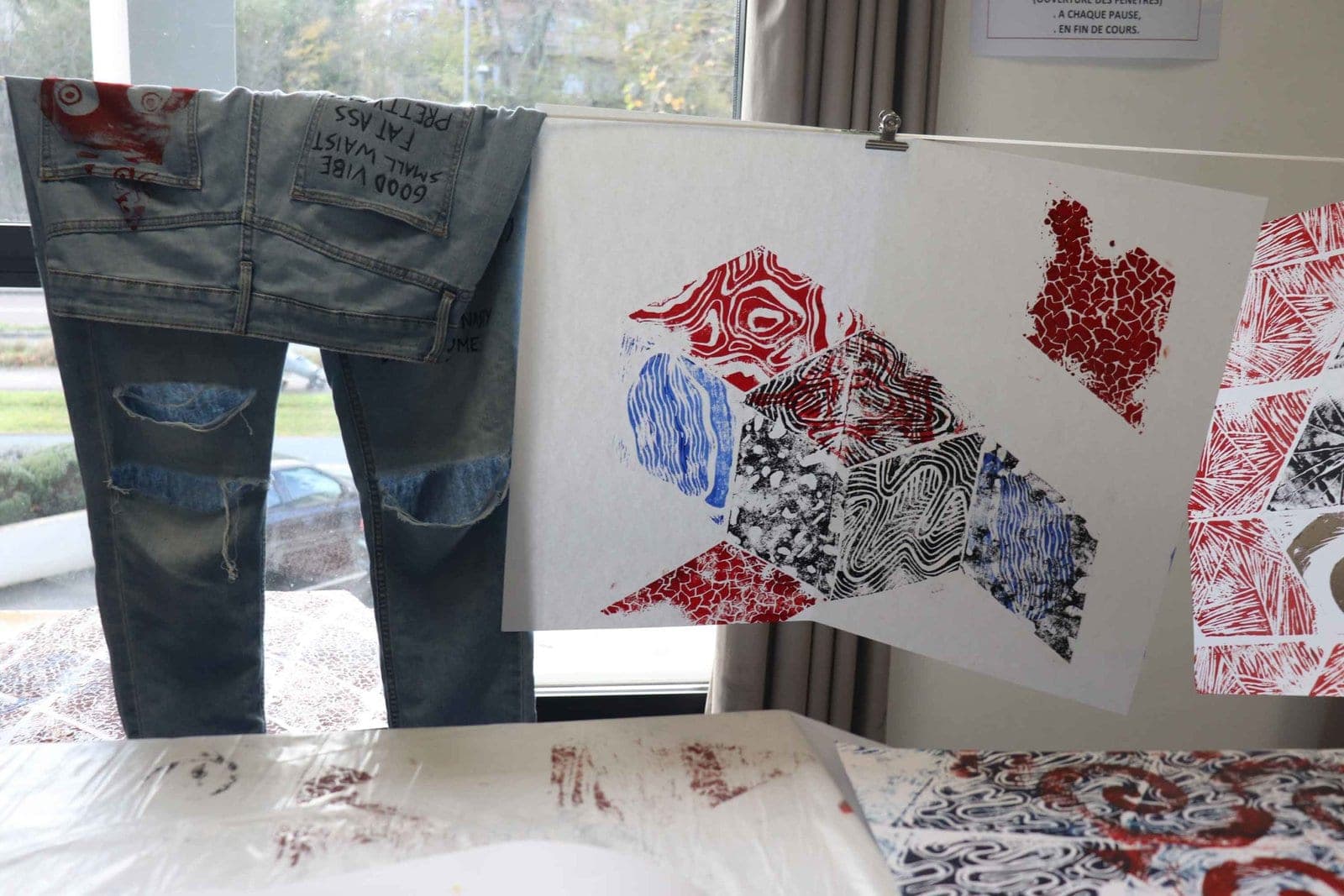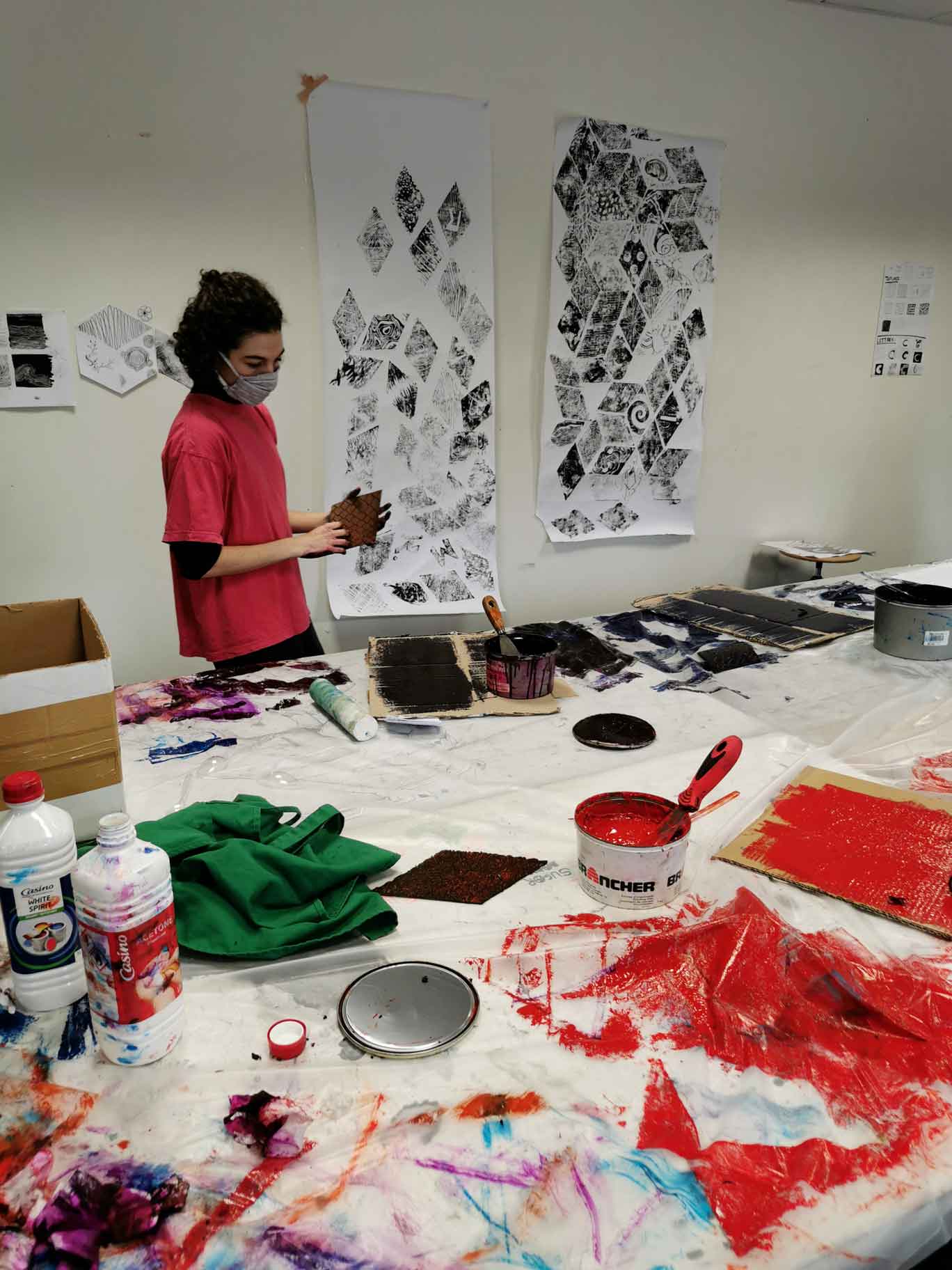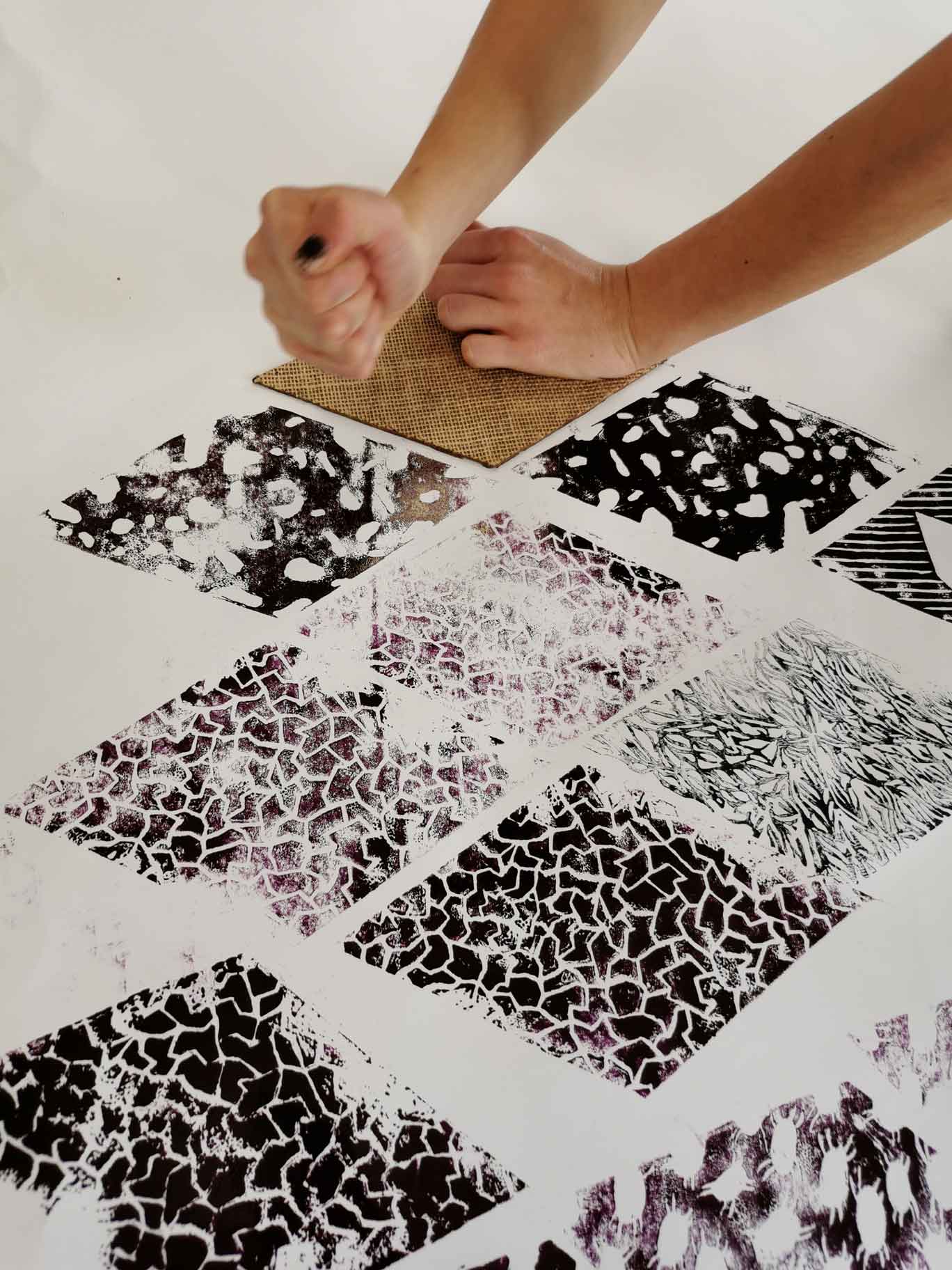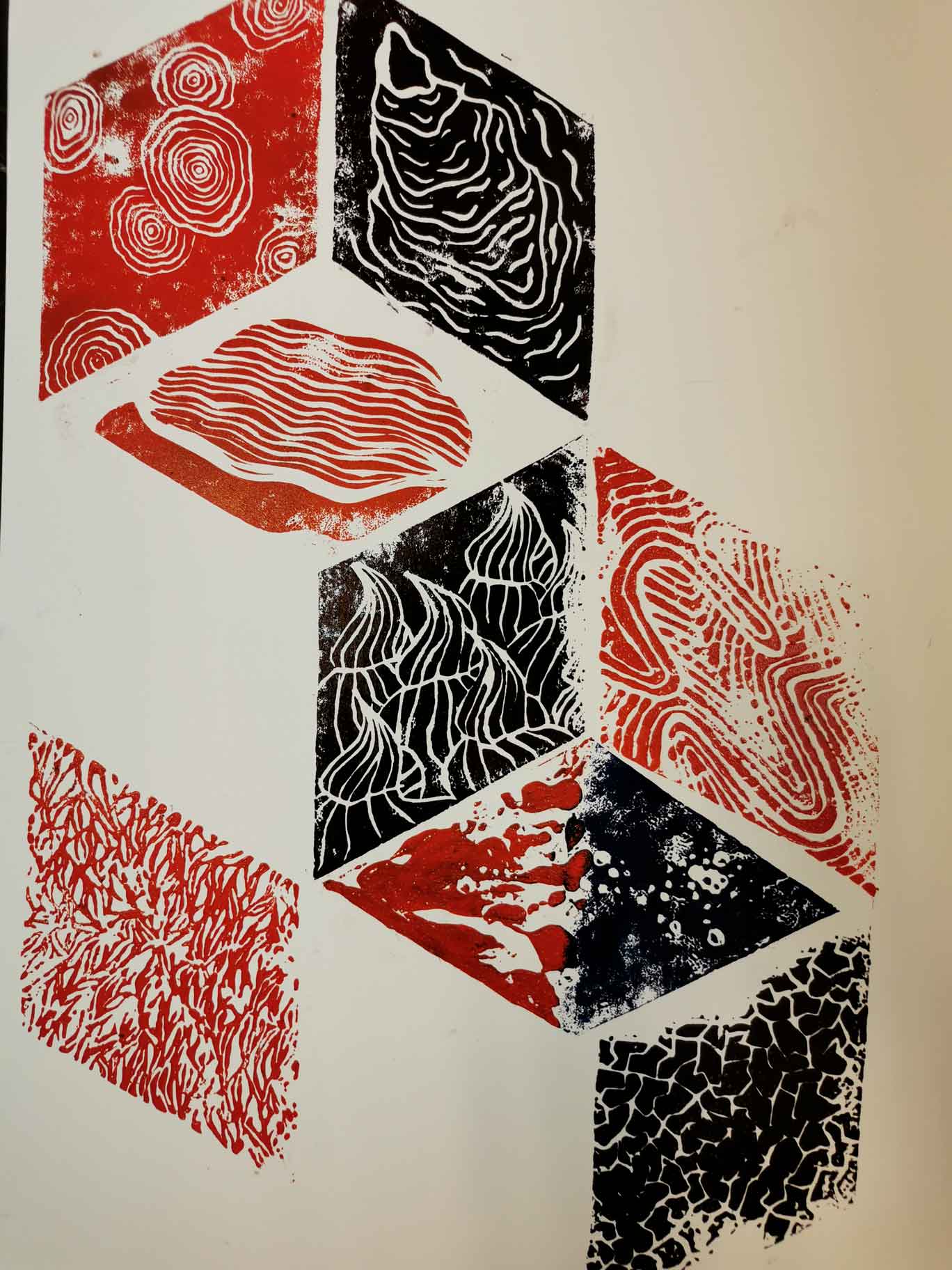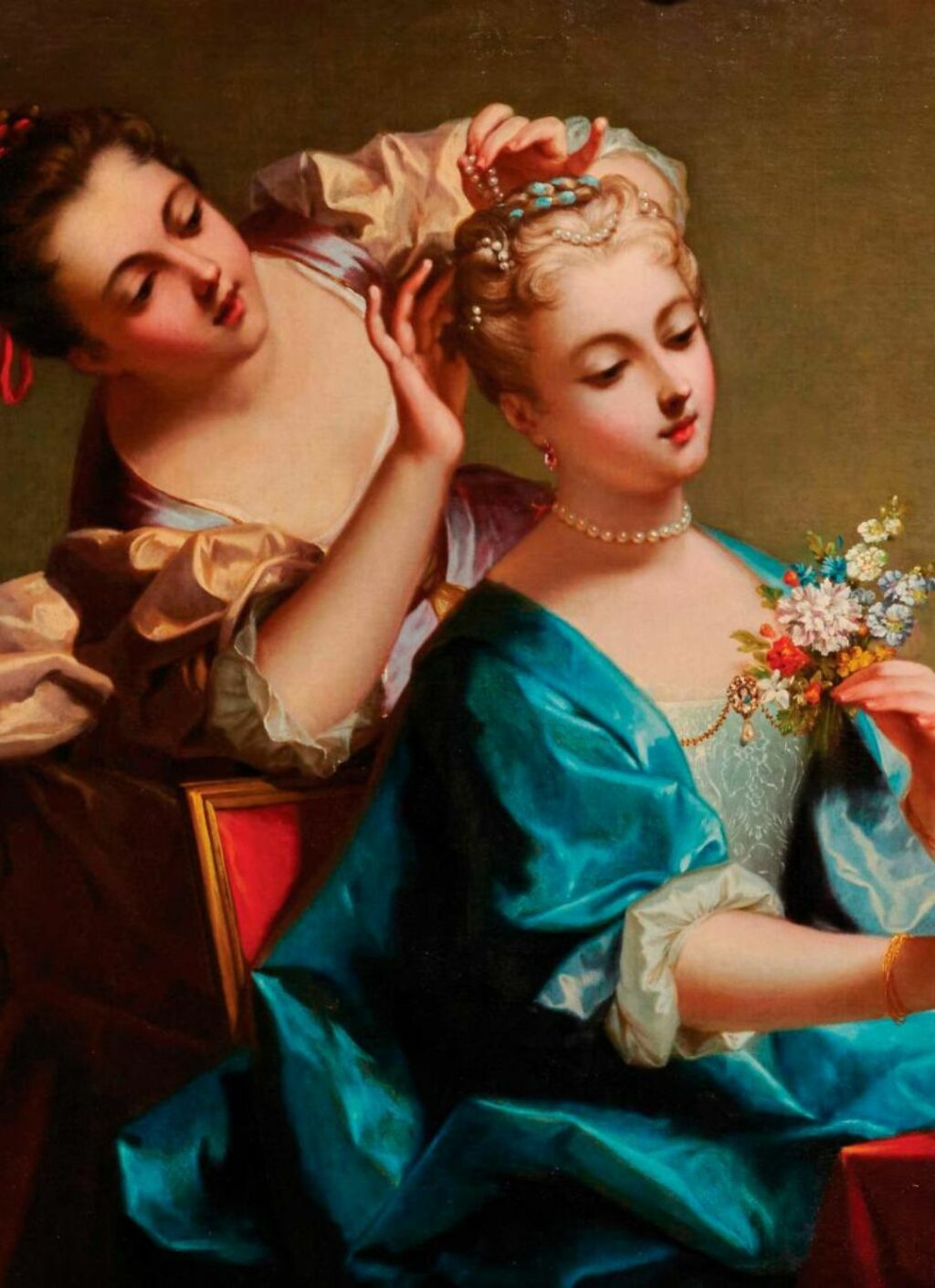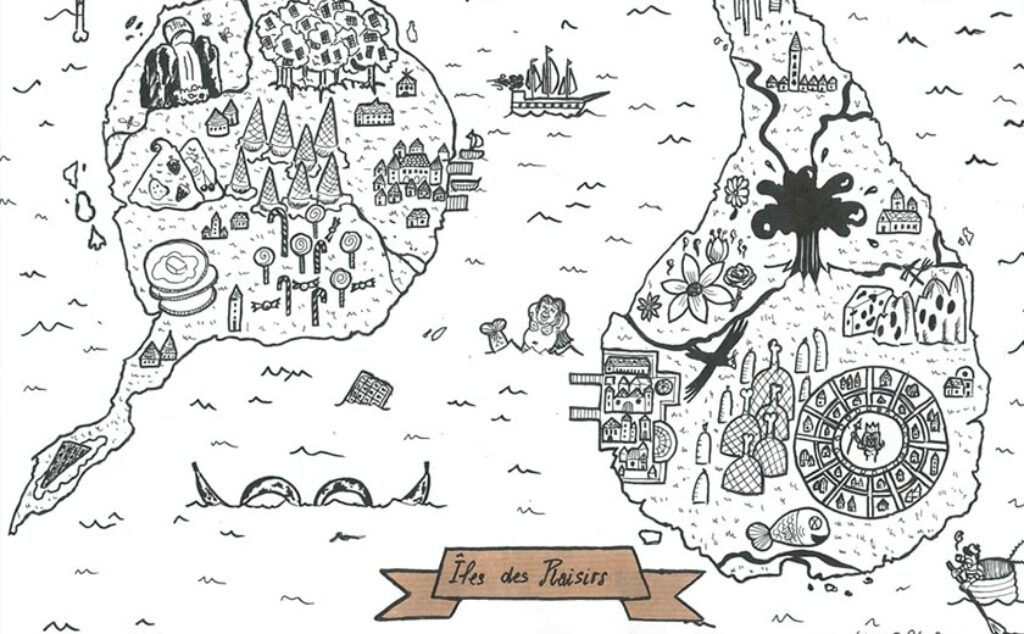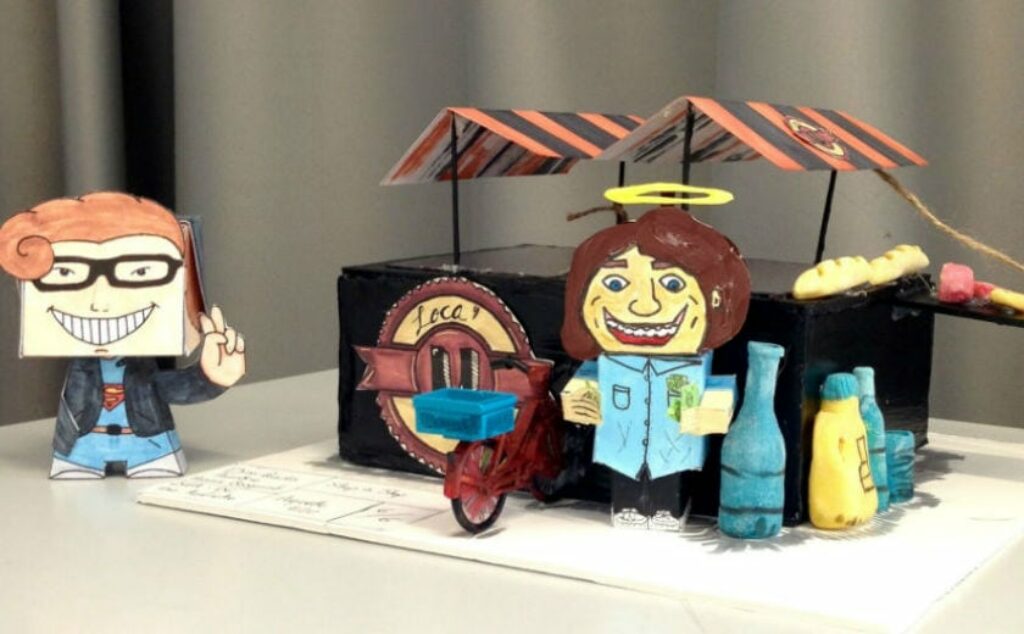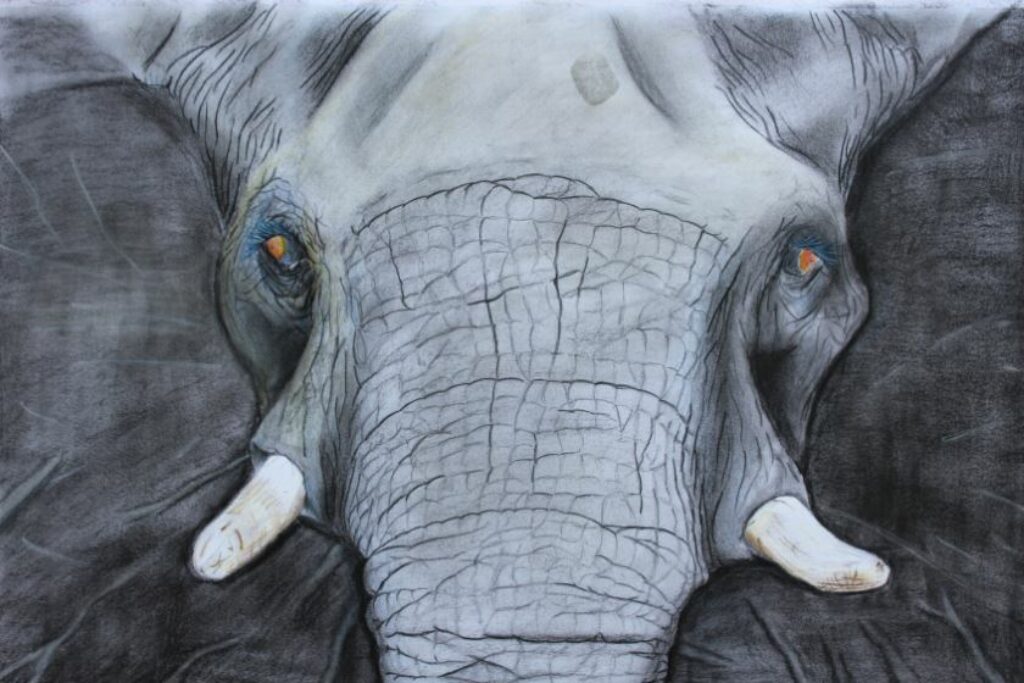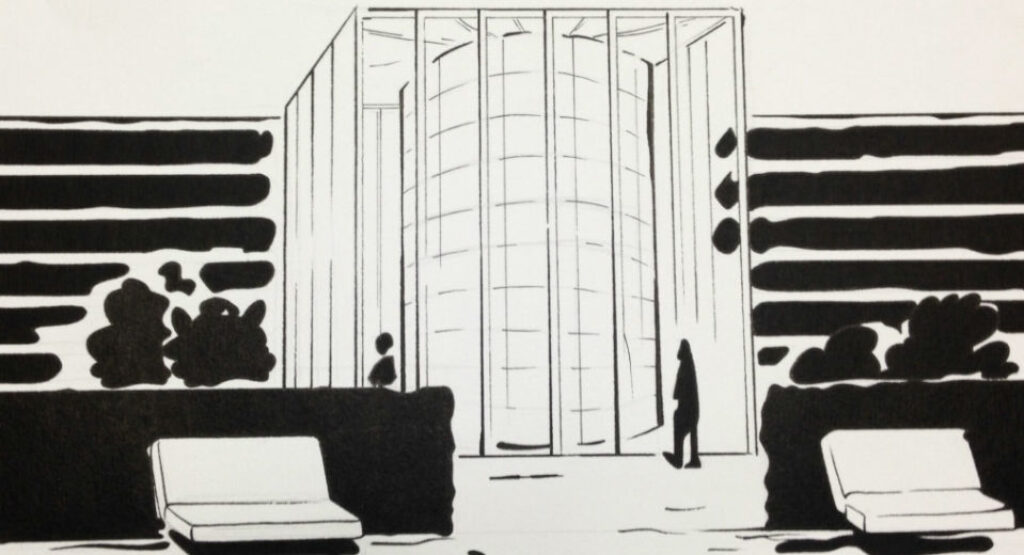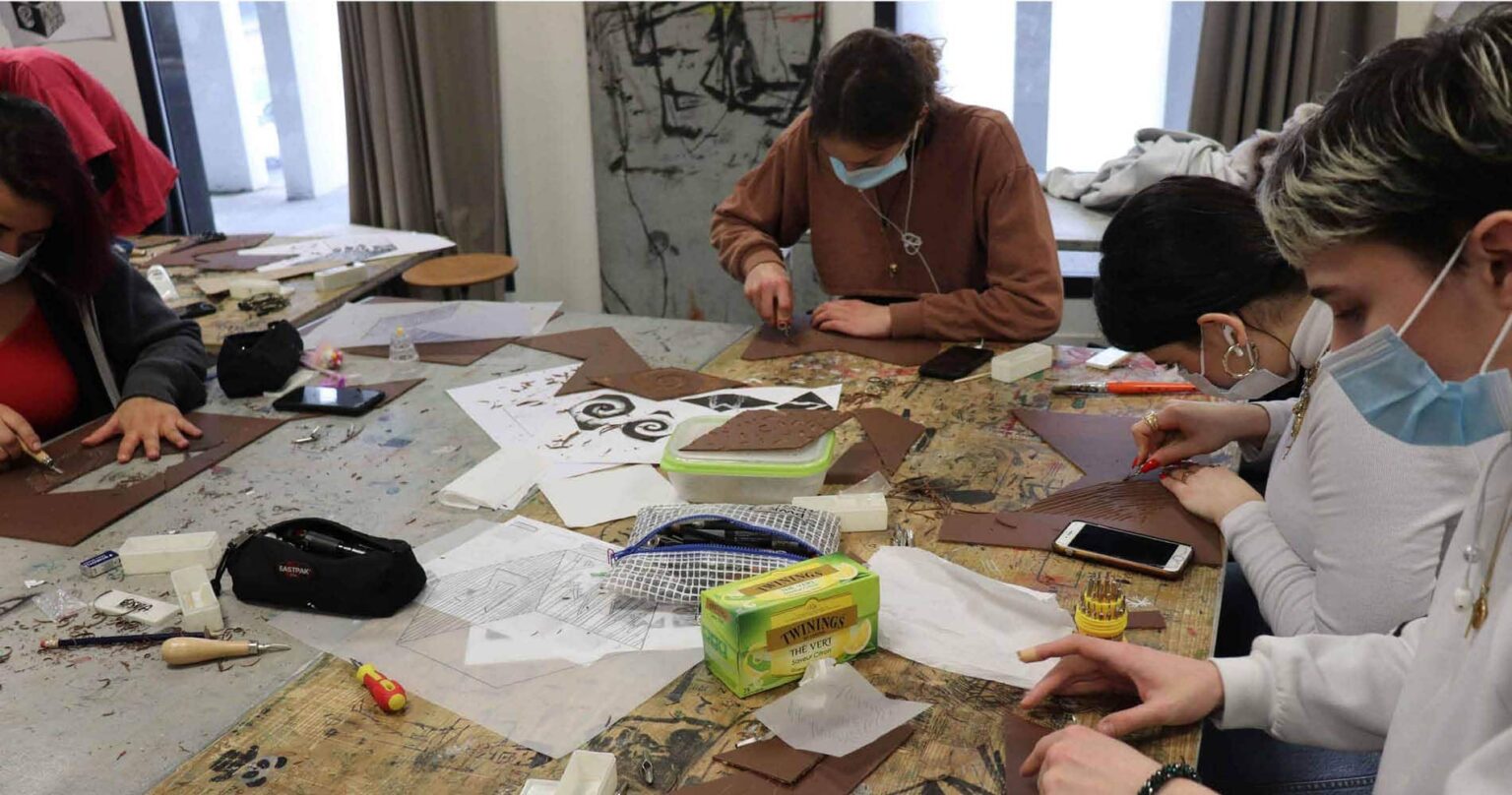
- Training Preparatory Entertainment
- Promotion 2021
During a three-day masterclass, Prépa Design students were introduced to the linocut technique, a process derived from wood engraving.
Linocut is an easy-to-access form of artistic expression derived from wood engraving that opens up real artistic horizons!
Linocutting, or “lino” to specialists, is done on linoleum, a material that had its heyday last century in the creation of furniture, but also as a floor covering for our ancestors. It’s also environmentally friendly, which makes it even better.
While linoleum has found its place with the general public in the creation of furniture and flooring, it has also inspired artists such as Picasso, who painted and engraved it. Matisse also tried his hand at various engraving techniques.
Linocut is a relatively recent engraving technique. The first linocut sketches appeared in the early twentieth century.
Technically, there are three main stages in linocut engraving: the removal of future areas of white and work on the plate (engraving proper), the application of ink (inking), and finally the transfer of the engraved image onto paper (printing).
In practical terms, the linoleum plate is hollowed out using gouges. The engraver spares the motif and hollows out the blanks. The inked matrix is used to print multiple copies of the same image. The print is reversed in relation to the engraved motif, like a stamp. By pressing the substrate against the inked plate, an impression is obtained. And that’s it!
The Prépa Design students from Toulouse spent three days discovering this technique.
They experimented with the relief printing technique on a lino plate, while at the same time reflecting on composition and visual rhythm.
Each student had to produce three tiles in a predefined format, then pool their matrices to produce a two-colour poster design.
SUBJECT OF THE EXERCISE
Over three days, test and experiment with the linocut technique.
INSTRUCTIONS FOR THE EXERCISE
- Each student must create 3 engraved tiles,
- Do not exceed the required format,
- Pool all the tiles to produce collective posters.
EDUCATIONAL OBJECTIVE
To discover images in a different way, playing with hollows and solids to create a pattern.
The students were also asked to create a common motif through their own work.
TECHNIQUE(S)
Free choice of designs.
Inks, linoleum plates, gouges, paper.
